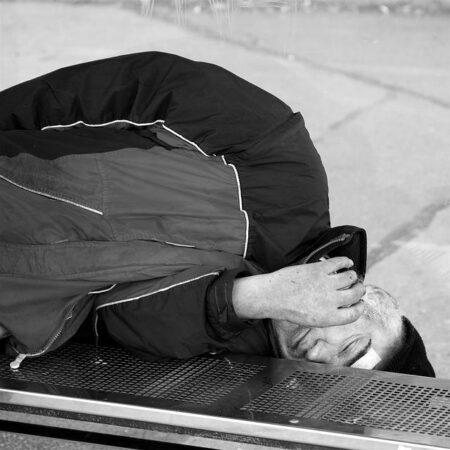The recent settlement in the landmark House v. NCAA case marks a pivotal shift in the landscape of college athletics, fundamentally redefining the relationship between student-athletes and the governing body of collegiate sports. While the agreement promises significant changes-including expanded opportunities for athlete compensation and enhanced rights-experts warn that it is unlikely to usher in long-term stability for the NCAA or the broader college sports ecosystem. As institutions, athletes, and stakeholders grapple with the settlement’s implications, the future of college athletics remains as dynamic and uncertain as ever.
House v NCAA settlement reshapes power dynamics in college sports
In a landmark agreement, the House v. NCAA settlement has redefined the balance of control within college sports, granting student-athletes unprecedented rights to monetize their name, image, and likeness (NIL). This newfound autonomy weakens the NCAA’s previously unchallenged authority, shifting power towards players who can now capitalize on personal branding and endorsements. However, despite this apparent win for athletes, the settlement has also stirred a complex and often volatile marketplace, where financial disparities between programs could widen dramatically. Institutions will need to navigate this evolving landscape carefully, balancing competitive integrity with the commercial ambitions of their athletes.
Key implications of the settlement include:
- Increased bargaining power for athletes in NIL negotiations
- Emergence of third-party agencies and sponsorship deals tailored to individual players
- Heightened competition among universities to attract top talent via better NIL support
- Potential erosion of traditional NCAA regulatory frameworks
| Aspect | Pre-Settlement | Post-Settlement |
|---|---|---|
| Player Compensation | Strictly prohibited | Legalized NIL earnings |
| NCAA Authority | Centralized control | Decentralized, athlete-driven |
| Recruiting Tactics | Based on athletics & academics | Includes NIL potential & marketability |
Implications for athlete compensation and recruitment practices
With the settlement in House v. NCAA, the landscape for athlete compensation is set to shift dramatically, ushering in a new era where players can leverage their name, image, and likeness (NIL) rights without fear of NCAA-imposed sanctions. This legal victory removes longstanding barriers, enabling athletes to pursue endorsement deals, sponsorships, and other revenue streams more freely than ever. However, the changes also introduce fresh challenges for schools and programs striving to maintain competitive balance. As institutions adapt, recruitment strategies will likely become more aggressive and commercially driven, placing unprecedented emphasis on an athlete’s marketability alongside their athletic prowess.
- Boosted NIL opportunities will compel programs to amplify their marketing and support structures to attract top talent.
- Recruiters may prioritize brand potential over traditional metrics, altering the fundamentals of talent evaluation and scouting.
- Financial arms races among schools could intensify, with smaller programs struggling to keep pace in offering exposure and off-field benefits.
| Recruitment Factor | Pre-Settlement | Post-Settlement |
|---|---|---|
| NIL Negotiation | Limited, NCAA-controlled | Open-market, athlete-driven |
| Recruiter Focus | Skill and stats | Skill, stats, and branding potential |
| Competitive Balance | Moderate regulation | Potential disparity growth |
Challenges ahead for regulatory consistency and enforcement
The aftermath of the House v. NCAA settlement ushers in a new era of college athletics, but with it comes a labyrinth of challenges. Regulatory consistency remains elusive as state laws, conference policies, and NCAA guidelines struggle to align. The decentralized nature of college sports governance means oversight and enforcement will vary widely, leading to potential conflicts and loopholes. Schools and athletes alike will need to navigate a patchwork system where compliance is anything but straightforward, heightening the risk of inconsistency in application and enforcement.
Key hurdles facing regulators and institutions include:
- Divergent state legislation complicating uniform rules
- Varying enforcement capabilities among conferences and schools
- Ambiguities in NIL (Name, Image, Likeness) policies and their practical application
- Resource disparities leading to uneven compliance monitoring
| Challenge | Impact | Potential Solution |
|---|---|---|
| State-by-State NIL Variance | Inconsistent athlete rights across borders | Federal NIL standards or model legislation |
| Disparate Enforcement | Unequal penalties and oversight | Centralized NCAA enforcement division |
| Resource Inequalities | ||
| Resource Inequalities | Uneven ability to monitor and ensure compliance | Increased funding or shared compliance resources |
| Area | Recommendation | Expected Impact |
|---|---|---|
| Legal | Regular updates on NIL rulings and case law | Reduced risk of violations and sanctions |
| Athlete Support | Workshops on financial literacy and contract negotiation | Empowered athletes who make informed decisions |
| Technology | Implement NIL management platforms | Streamlined monitoring and reporting |
Equally important is the recognition that this settlement heralds an era of uncertainty rather than immediate stability. Institutions should prioritize adaptability in their governance structures, anticipating additional legal challenges, state law discrepancies, and shifting public opinions. By fostering a culture accustomed to change, schools can better manage the unpredictable dynamics of collegiate sports and maintain competitive and ethical standards amid mounting pressures.
Key Takeaways
As the dust settles on the landmark House v. NCAA settlement, college athletics enters a new era defined by unprecedented changes in athlete compensation and governance. While the agreement marks a pivotal shift away from longstanding NCAA restrictions, experts caution that it may also usher in a period of continued uncertainty and complex legal challenges. For fans, institutions, and athletes alike, the redefined landscape promises to reshape recruiting, competition, and financial dynamics-but stability remains an elusive goal in the evolving world of college sports. CBS Sports will continue to monitor developments as this transformative story unfolds.




